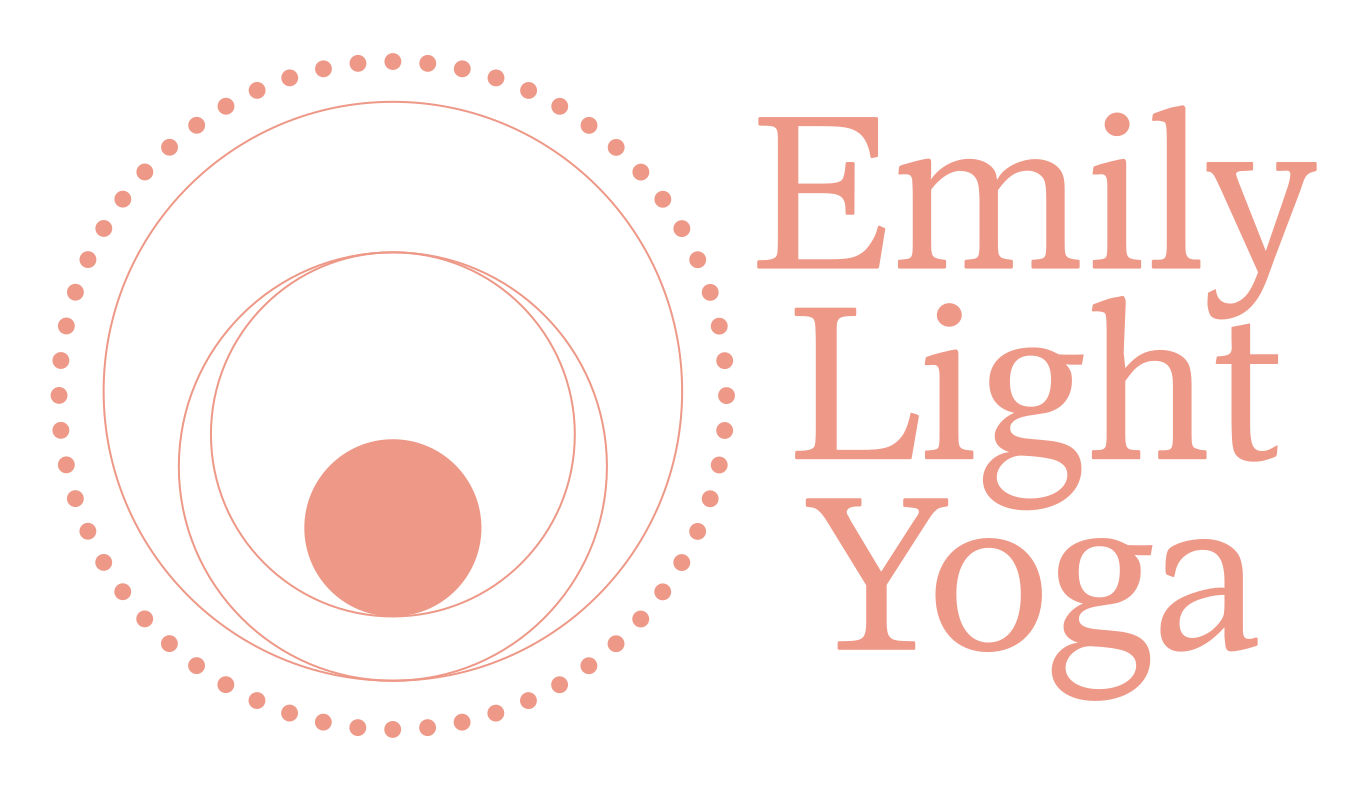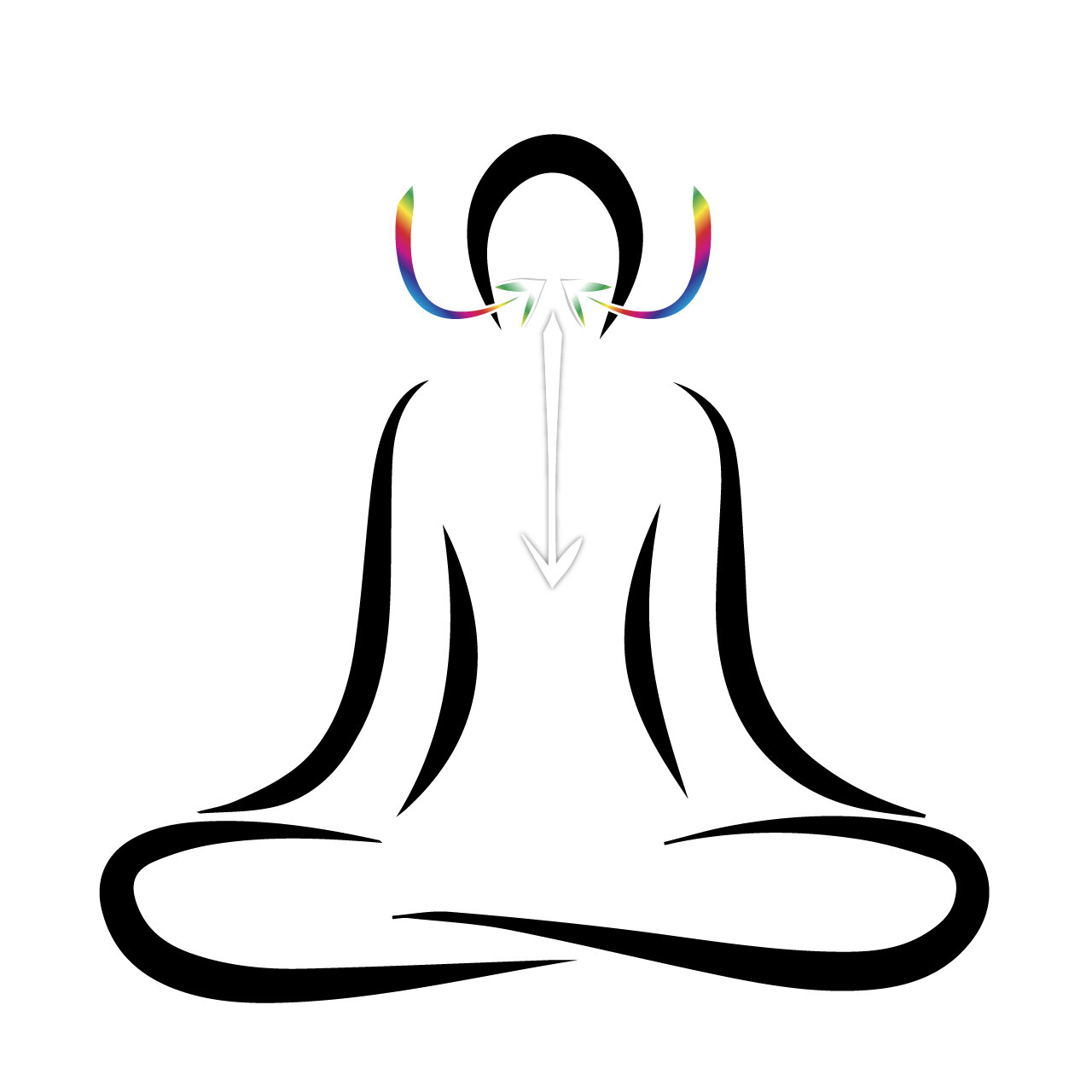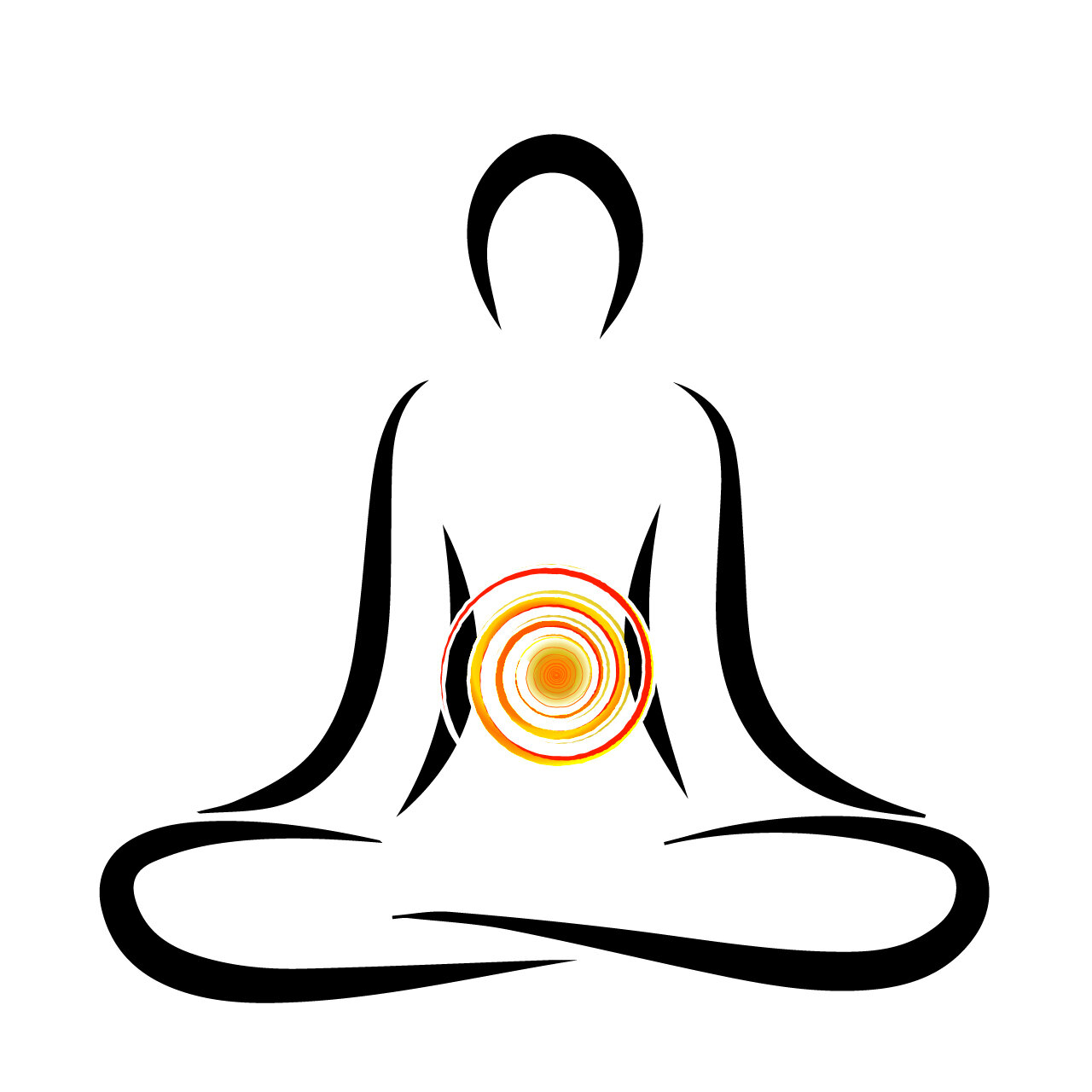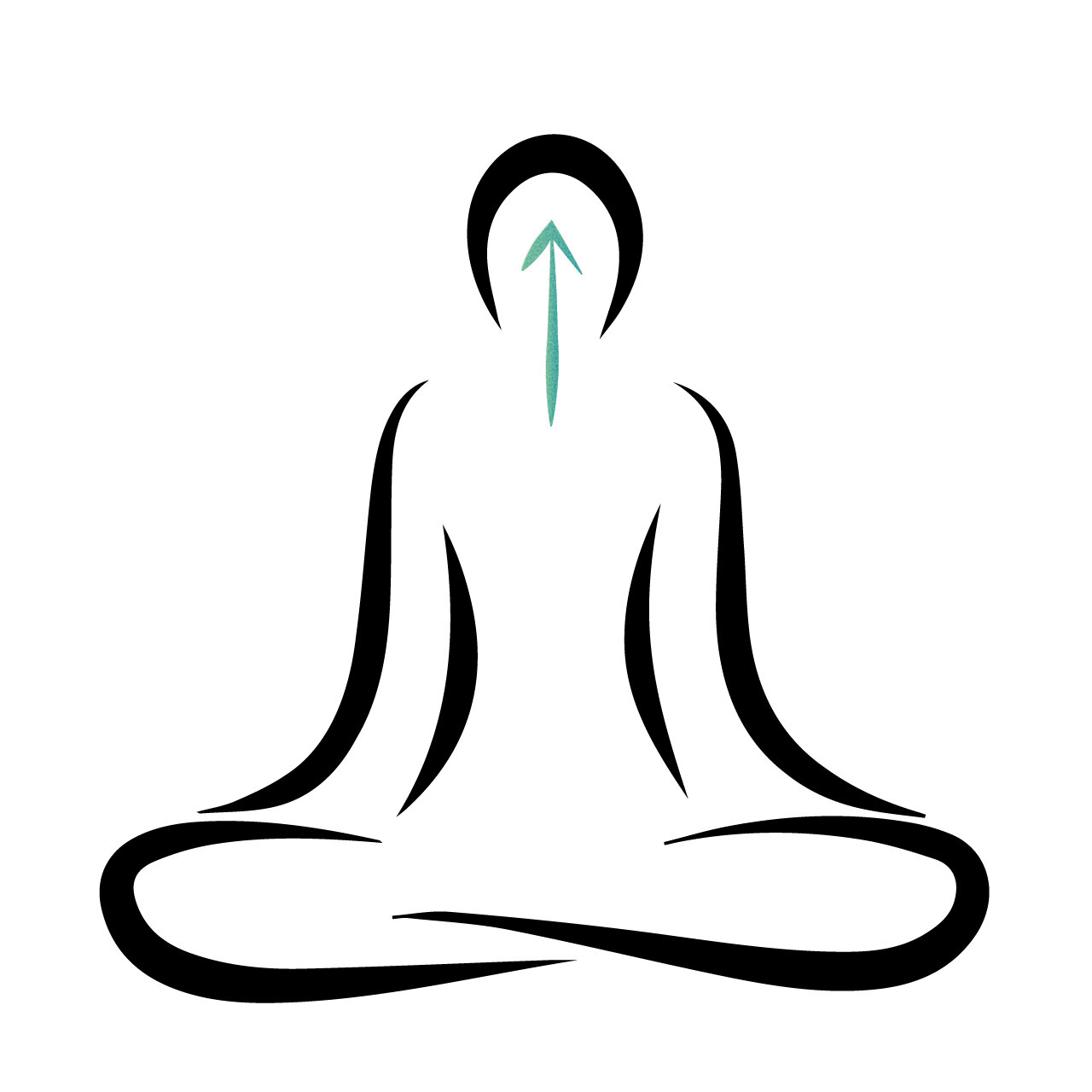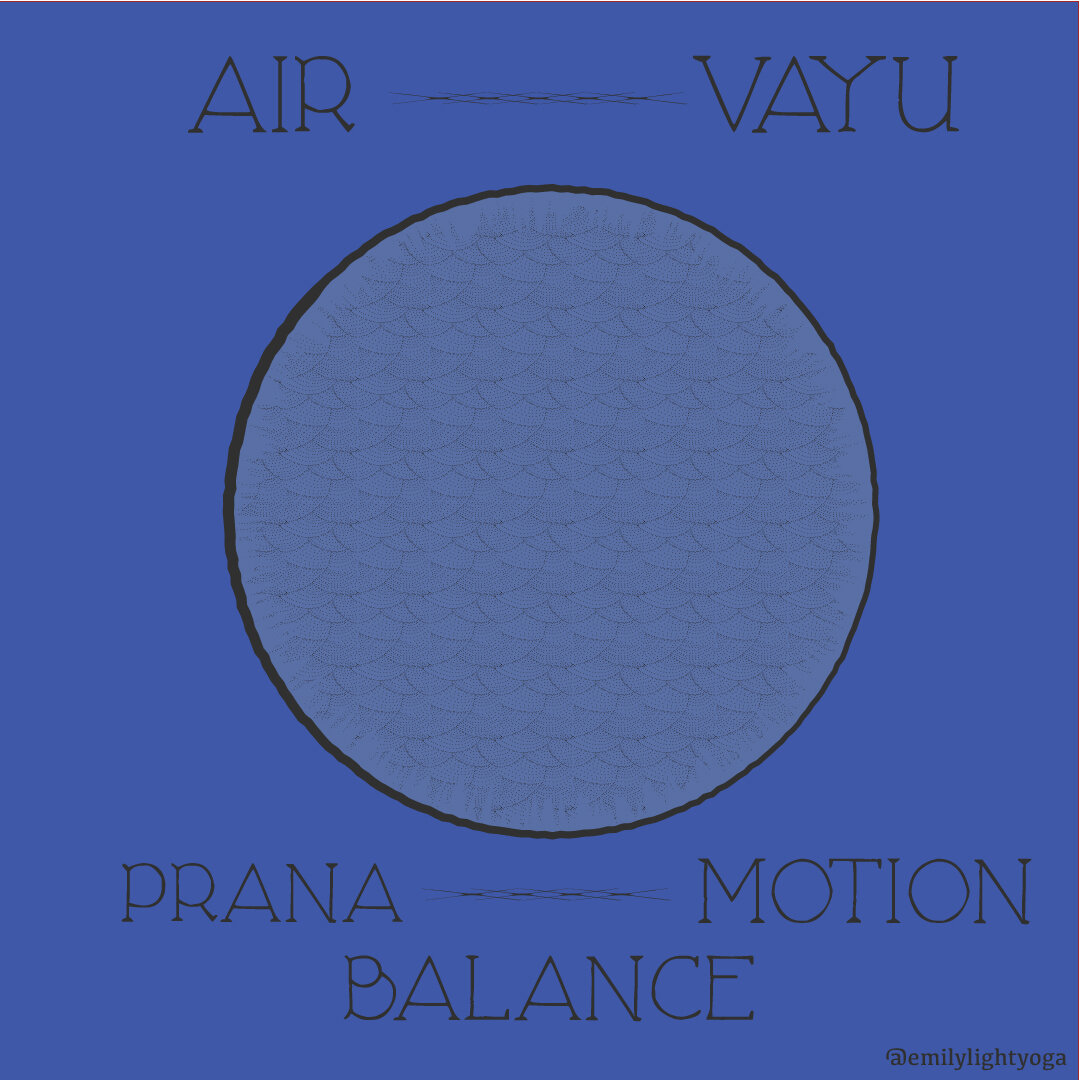Vayu Yoga and Elemental Yoga
Introduction to Vayu Yoga
You know what it feels like to root down into the ground, and to lift up toward sky. You know how it feels to get really big and expansive, and how it feels to get really small and contracted. Your body knows what it feels like to receive, and what it feels like to release.
What you’re noticing in these circumstances I described above, are the various ways in which Prana moves in your body, as well as outside of the body, in the greater world we live in. Prana is our life force, chi, our vitality.
Prana is categorized into five major subtypes, called vayus or “winds”. Each vayu has:
A direction it flows
Actions it’s responsible for
A “seat” in the body, though, the actions are global
My intention here is to offer some guidance on ways you can attune to that which is already occurring within you. When we build awareness of how our bodies and minds move, we have a greater capacity to utilize our yoga tools therapeutically. With a heightened sensitivity of these movements and actions, we're able to refine our practices to best support our needs, and our needs as they change.
Vayu Yoga is the exploration of these subtypes of Prana.
The Five Vayus
Prana vayu – seated in the head - inward moving air - responsible for reception
Samana vayu – seated at the navel center - balancing air that moves from the periphery to the center - responsible for digestion
Vyana vayu – seated in the chest - outward moving air that travels from the center to the periphery - responsible for circulation
Apana vayu – seated in the low abdomen - downward and outward moving air - responsible for elimination
Udana vayu – seated in the throat - upward moving air - responsible for expression and growth
Prana Vayu
Prana vayu moves inward through the senses.
Prana vayu governs reception of air, food, water, sensory impressions and experiences. It’s considered the most fundamental quality of Air, because without it we wouldn’t be able to absorb Prana from the air we breathe, the food we eat, and from all the other sources of Prana.
When we're feeling drained, depleted or exhausted, prana vayu allows for us to fill our cups, recharge, build strength and vitality.
PRACTICE WITH PRANA VAYU
Rest into the experience of "receiving" in your practice: receive your breath, receive the posture, receive the support of the props and ground, etc.
Inhale / Puraka: Focus on the feeling of breath naturally flowing into your body, highlighting the inward, receptive action of prana vayu
Postures, Breath and Mindfulness that encourage the flow of Prana to the head
Samana Vayu
Samana spirals inward growing more concentrated.
Samana vayu translates to “balancing air” and is responsible for digestion on all levels: digestion of food, our experiences and emotions. Samana allows us to extract Prana and other nutrients from everything that we take in.
In those moments where we find ourselves too full... of food, media or news, samana processes what we’ve received, so we can absorb the useful bits, all the while providing a sense of centeredness and balance.
PRACTICE WITH SAMANA VAYU
Center into the experience of "digesting"
Internal Retention / Antara Kumbhaka: In the first half of your internal retention, samana extracts Prana and other nutrients from the Air you receive (*see note below on retention guidelines)
Postures, Breath and Mindfulness that direct Prana to the navel center
Vyana Vayu
Vyana expands and radiates from the heart center.
Vyana vayu is responsible for all circulation: circulation of blood, oxygen, nutrients, and Prana, as well as circulation of thoughts, ideas and emotions. An expansive force, vyana governs the movement of Prana through the energy channels / nadis, the circulatory and nervous systems.
Connect with vyana when circulation feels hindered - maybe that's cold hands and feet, numbness, stuck movement patterns or writer's block. Vyana is also said to integrate and coordinate the actions of the other four vayus.
PRACTICE WITH VYANA VAYU
Expand into the experience of "circulating"
Internal Retention / Antara Kumbhaka: In the second half of your internal retention, vyana vayu spreads Prana and nutrients throughout your body and mind
Postures, Breath and Mindfulness that promote Prana flow from the heart center to the periphery of the body
Apana Vayu
Apana moves down and out.
Apana vayu is all about release - physical, mental, and emotional release. Apana eliminates anything that obstructs good health. It’s the basis for our immune function, determining what’s useful and what’s not, what’s self and what’s not.
Whether we need to let go of a limiting belief, pent-up frustration, anxiety or tension, we can turn to apana for support.
PRACTICE WITH APANA VAYU
Root into the experience of "eliminating"
Exhale / Recheka: As you breathe out, in the first half of your exhale apana vayu allows for the release of wastes and everything that you don't need to integrate
Postures, Breath and Mindfulness that guide Prana down
Udana Vayu
Udana moves upward.
Udana vayu is seated in the throat center, influencing growth, speech and other refined ways of communicating.
When udana is balanced and strong, we stand tall and hold our head up high. We feel joyous, enthusiastic, alert, articulate, and strong-willed. When udana is out of balance, we may feel tendencies toward negativity, inappropriate or excessive speech— or we may feel we can’t express ourselves at all.
PRACTICE WITH UDANA VAYU
Ride the experience of "expressing"
Exhale / Recheka: In the second half of your exhale, udana utilizes the positive energy from receiving, digesting and circulating prana and nutrients, and eliminating wastes for expression
Postures, Breath and Mindfulness that usher Prana upward
I encourage you to lean into these vayus, their movements and actions, and to continue to grow your awareness of them. You may find that one vayu speaks to you and your needs at a certain point in your day, month or year.
Our bodies, minds and hearts are expressing their needs all of the time... the practice is to continue waking up to that which is right in front of us.
Additional reading:
Yoga and Ayurveda: Self-healing and self-realization by David Frawley
* Holding your Breath / Retention Guidelines: There are certain times that we don't want to hold the breath in, as this practice increases pressure in the body cavities. Refrain from this breathing practice if any of the following apply: high blood pressure, glaucoma, hernia, pregnancy, diastasis recti, prolapse, or any other pressure sensitive circumstance.
Introduction to Elemental Yoga
The Earth Element in Yoga
The Earth Yantra is a Yellow Square.
The element Earth is associated with the basic needs of living life, such as safety in our home, nourishing ourselves with food, stability in our work and finances, as well as our relationship with Mother Earth herself. Earth teaches us about the rhythms of nature and that awareness guides us into connection with our own rhythms. Earth helps to root us into the physical world, and into our bodies.
Connecting with the Earth element is such good medicine in times of uncertainty and fear. When we feel worried, anxious or distracted, Earth reminds us that at our core, underneath all of the hardship and upset, lies an inherent, unwavering steadiness. And within that steadiness, is acceptance and trust.
Earth and its qualities are a resource we can draw upon during stressful times to help nourish and anchor us. We can also build the energy of Earth in our bodies and our lives, with practices both on and off our mats and cushions.
Earth / Prithvi Practices
Tools that promote the Downward Flow of Prana / Apana Vayu ⠀⠀⠀⠀⠀
Postures: Forward Folds and Standing Postures; Restorative ⠀⠀⠀⠀⠀
Breathing: Lengthen the Exhalation; Pressure Chamber Breath⠀⠀⠀⠀⠀
Mindfulness Tool: Feel the Bones of your Body Connected to the Floor or props, Supported by Earth⠀⠀⠀ ⠀⠀⠀⠀⠀
Chakra: Root / Muladhara⠀⠀ ⠀⠀⠀⠀⠀
Add Earth items to your Altar or Practice Space: Stones or Crystals or other representations of Earth, Earth Yantra or Square Shaped Items
Colors: Earth Yantra is Yellow, and Red is one of the colors associated with Muladhara – play around with what works for you ⠀⠀⠀⠀⠀
Get outside in Nature (lay down in grass or sand if possible)⠀⠀⠀
Bring the Outside In - with Houseplants and Flowers
I encourage you to practice connecting to Earth when fear, anxiety and insecurity arise. Lean into Earth's qualities of steadiness and quietude to ground, calm, and nourish. And from this rooted place, you'll build the energy you need to grow upward and outward.
The Water Element in Yoga
The Water Yantra is a Grey/Silver Crescent Moon Shape.
Water represents our innate ability to navigate the ups and downs of life while flowing in the path of least resistance. Water is adaptable and resilient in the face of whatever lies in its path, and reminds us that we too can bend, change shape, rise up and persevere.⠀⠀⠀
To navigate the ups and downs of life requires a level of creativity. Whether we’re creating art, projects for work, creating another life, or creating the life we want to live, Water connects us to our creative well.
When we feel rigid in our bodies, or rigid in our beliefs… about ourselves, others, or the world we live in, Water can help us restore a sense of freedom and liberation in the ways we move our bodies, and move in our lives. When we feel overwhelmed by emotion, our resilience depleted, or our creative well feels as though it's run dry, we can turn to Water to fill our cups.
Here are some ways to call upon, connect with, and celebrate the element Water:
WATER / APAS PRACTICES⠀
Tools that promote the Downward Flow of Prana / Apana Vayu ⠀⠀
Postures: Forward Folds and Standing Postures; Restorative; Focus on the Pelvis as a whole, including the Hips⠀⠀⠀⠀⠀
Breathing: Lengthen the Exhalation; Chandra Bhedana⠀⠀⠀
Mindfulness Tool: Feel the Flow of Breath, and the Sensations of Breathing; Pelvic Breath⠀⠀⠀⠀⠀
Chakra: Sacral / Svadhisthana⠀ ⠀⠀⠀⠀⠀
Add Water items to your Altar or Practice Space: Representations of Water such as a bowl of water, images of Water or of a water organism like a Dolphin, Water Yantra or Crescent Moon Shaped Items⠀⠀⠀⠀⠀
Colors: Water Yantra is Grey, and Orange is one of the colors associated with Svadhistana – play around with what feels good to you⠀⠀⠀⠀
Get outside in Water – if a body of water isn’t accessible, get the garden hose out and run around in it⠀
Bring the Outside In – take a bath, and include Water features or decorations in your home
I encourage you to practice connecting to Water when emotions feel too big to hold, or when it's difficult to understand exactly what you're feeling, when creativity feels stunted or dry, or when there's a feeling of rigidity in body or mind. Water reminds us what if feels like to be in the experience of flow, to tap into our creative core, and to ride the waves of life.
The Fire Element in Yoga
The Fire Yantra is a Red Downward Facing Triangle.
Fire is the element of action and transformation, and governs digestion on all levels - digestion of the food we eat, our sensory impressions, experiences and emotions. As the element that creates light, the energy of Fire illuminates our experiences and our ability to discern what's useful and what's not useful, what to keep and what to let go of. Ultimately, this inner vision allows us to see truth from untruth, reality from unreality.
We all know what it feels like to take in too much... too much food, media, or information. We might feel stuffed, bogged down, or lethargic. When there's so much to digest and process, the mind may feel dull or depressive. When these experiences arise, it's time for Fire medicine.
In addition to digestion and illumination, Fire also represents our passions, inner strength, will, and agency. Fire is what motivates us to take action in our lives, to create the lives we want to live, and the world we want to live in. It's the energy of Fire that mobilizes our intentions.
When we feel like our inner spark has fizzled out, we're uninspired, or disinterested in things we usually enjoy, Fire can help us reignite our inner flames of passion and motivation.
Here are some ways to call upon, connect with, and celebrate the element Fire / Tejas:
Fire / Tejas Practices
Tools that promote the movement of Prana to the Navel Center / Samana Vayu⠀⠀
Postures: Warming vinyasas; Strong core-centeric postures and exercises; Postures that put a little pressure on the belly like Crocodile, Locust and Bow; To promote digestion immediately after taking in food or an experience, focus on calming, quieting restorative practices while creating space for a soft, relaxed abdomen
Breathing: Victorious Breath / Ujjayi; Shining Skull / Kapalabhati; Breath of Fire / Bhastrika⠀
Mindfulness Tool: Sound of Ujjayi Breath; Connection to inner strength, courage and the ability to take action
Chakra: Navel / Manipura⠀ ⠀⠀⠀⠀⠀
Add Fire items to your Altar or Practice Space: Candles, incense, images of Fire, the Sun, or other representations of Fire, Fire Yantra or Downward Facing Triangle shaped Items⠀⠀⠀⠀⠀
Colors: Fire Yantra is Red, and Yellow is one of the colors associated with Manipura – play around with what feels good to you⠀⠀⠀⠀
Have a fire outside (in a controlled environment!)
In your home – light candles, and include other Fire features or decorations in your home
I encourage you to practice connecting to Fire whenever you need support in breaking down, processing and integrating what's been taken in or experienced. When inspiration and enthusiasm are distant memories, Fire reminds us what if feels like to be connected to our inner strength and courage, to take action, and to be awake in our bodies and lives.
The Air Element in Yoga
The Air Yantra is a Blue Circle.
Air represents movement and changeability. Air is without form, and can move in all directions: inward, upward, downward, expanding and contracting. While Water is the element that flows in the path of least resistance, Air is the moving force. Air is element responsible for all movement in nature/prakriti.
Everything that moves is moved by Air.
Wind is a tangible, physical representation of the element Air, and sometimes we refer to Air as Wind. Air is the force that moves the ocean, our breath and the beating of our hearts. Nerve impulses, lifting an arm, and the flow of ideas in our minds, is all possible because of Air. While the other elements are moved, Water rushes down a mountain side... Fire appears to run and jump at times... they don’t have the ability to move on their own, they need the propelling action of Air.
Just as wind moves in all directions, and our bodies can move in all directions, Air has five main subtypes or manifestations, each of which has a seat in the body, a direction that it moves, and actions it's responsible for. The Sanskrit word for the element Air or Wind is vayu. Thus the element Air is referred to as "vayu" and the five subtypes of Air are also called vayus. Here's a post that dives into each one of these manifestations of Air.
Connecting with Air can help us notice how we’re skillfully harnessing this energy of motion... when we're moving too fast, not enough, or depleted because we’re moving in unskillful ways. We’ve all had the experience of moving too quickly for too long a time and feeling exhausted. On the flip side, we've all likely found ourselves stuck on the couch in Netflix-land, not moving enough and feeling drained because of the inertia. Attentiveness to Air, and how we're moving in our lives can help us to refine the ways in which we move, so we have can access to all of the flavors of energy and calmness, when we need them.
Here are some ways to call upon, connect with, and celebrate the element Air:
Air / Vayu Practices:
Tools that promote the movement of all Five Winds / Vayus
Postures: Simple Vinyasas that invite awareness of the five vayus; postures that direct attention and Prana to the heart center
Breathing: Nadi Shoddhona, Brahmari
Mindfulness Tool: Touch - the feeling of body on props and ground, clothing, Air on skin, Sensations of Breathing
Chakra: Heart / Anahata ⠀⠀⠀⠀⠀
Add Air items to your Altar or Practice Space: Representations of Air such as images of the sky with clouds, or winged creatures: Air Yantra / Blue Circle⠀⠀⠀⠀⠀
Colors: Air Yantra is Blue, and Green is one of the colors associated with Anahata – play around with what feels useful for you⠀⠀⠀
Outside: Hang wind chimes and enjoy the breeze
In your home: Decorations or plants that hang or move with the circulation of Air, other Air features or decorations in your home
Practice with Air when you want to refine how you're utilizing your energy, where you're directing it, and how you're recharging your battery. Turn to Air to help you intentionally move in your body and within your life.
The Ether Element in Yoga
The Ether Yantra is a Black Egg Shape.
The element Ether (Akasha), is the idea of connectedness and space. It’s the space that all of the other elements fill, as well as the container and the connector of all of the elements, holding them and weaving them together.
As a container, Akasha is filled with channels and opportunity for intimacy, and can also highlight the space between us and others, providing a kind of personal container. Both qualities of Space: connector and container, can serve as a refuge.
Highlighting Akasha can open up channels of connection within one’s self, and with others, refining communication and expression. When we feel disconnected from aspects of ourselves or disconnected from others, Ether reminds us of the big space holding us all, and of our inherent interconnectedness.⠀⠀
In those moments where anxiety is running high or we feel the heaviness of depression, practicing with Akasha can allow us to create the space necessary to process and digest our experiences and emotions. When we’re feeling disconnected or there’s a communication break-down, we can practice connecting to Akasha. When we need assistance in fully expressing ourselves, Akasha’s here to help.
Ether / Akasha Practices
Tools that bring attention to spaces: the spaces within the body, breath, movement and thought, the space around your body
Postures: that promote prana flow toward the throat chakra / Visshudhi, postures that create a sense of space in the body⠀ ⠀⠀⠀⠀⠀
Breathing: Notice the spaces at the top of the inhalation and the bottom of the exhalation ⠀⠀⠀⠀⠀
Mindfulness Tool: Listening – sounds of nature, singing bowls, chimes, etc.⠀ ⠀⠀⠀⠀⠀
Chakra: Throat / Vissudhi⠀ ⠀⠀⠀⠀⠀
Add Ether items to your Altar or Practice Space: Ether Yantra or Egg-shaped Items; Sound-making items like bells and rattles⠀⠀⠀⠀⠀
Colors: Ether Yantra is Black, and Blue is one of the colors associated with Visshudhi⠀⠀⠀⠀⠀
Home – include Ether features or decorations in your home: create open space areas (and de-clutter!), include organic sound making items like wind chimes and fountains⠀⠀⠀ ⠀⠀⠀⠀⠀
Practice with Ether when you want to enhance connection, communication and expression. Resource Akasha to build intimacy with self and others, and to celebrate the interconnectedness of all.
